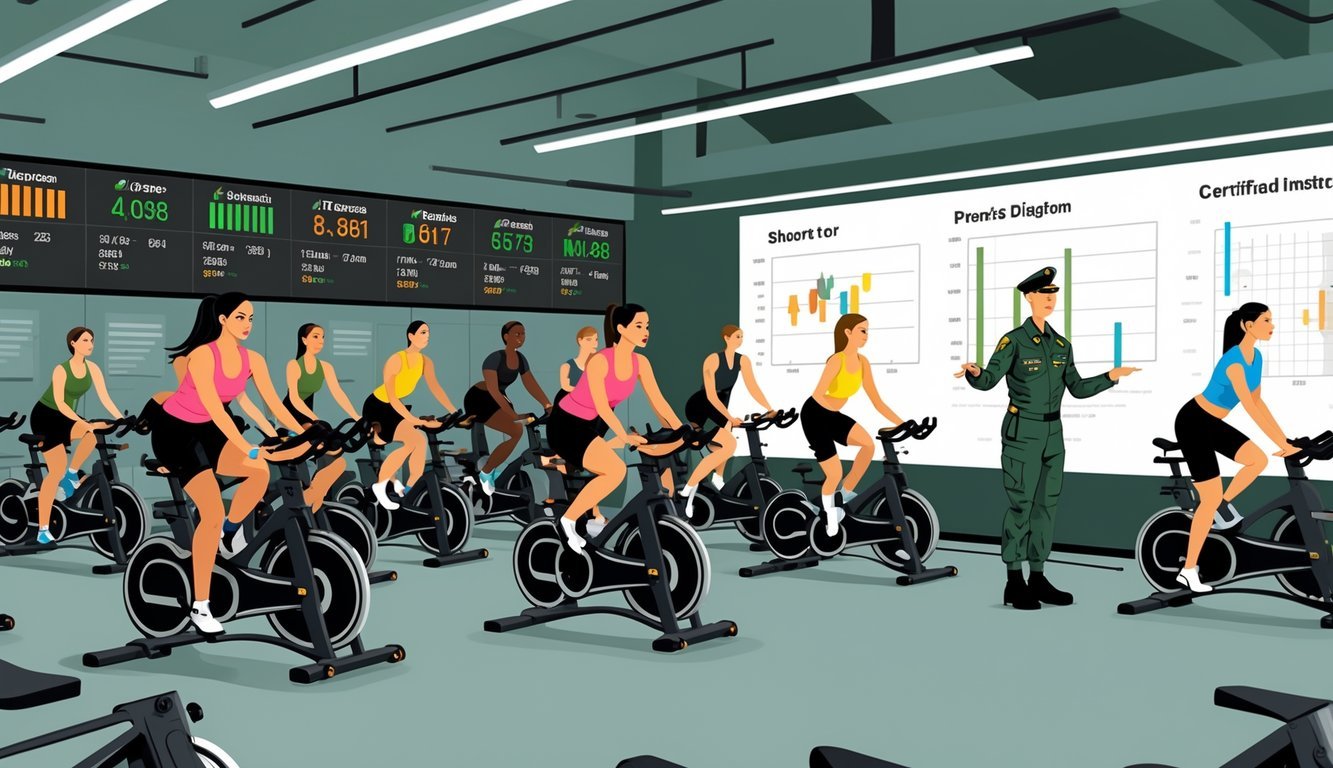Physical Address
304 North Cardinal St.
Dorchester Center, MA 02124
Physical Address
304 North Cardinal St.
Dorchester Center, MA 02124
The Army Physical Fitness Test includes a 6.2-mile bike event, with time limits varying by age and gender, requiring proper equipment and calibration for accurate scoring.

If you’re getting ready for the Army Physical Fitness Test (APFT) and weighing your options, it’s important to know the APFT bike standards.
The bike event is one of the alternate aerobic options, and it measures your fitness using a stationary bike.
To pass, you’ll need to finish a set bike ride—usually about 6.2 miles—in a specific time window, which depends on your age and gender.
That time frame typically falls between 24 and 34 minutes.
The standards are pretty strict, and you have to hit a minimum score to pass, just like with the running event.
If you know exactly what time you need and follow the right procedures, you’ll have a much better shot at success.
Maybe you’re switching to the bike because of an injury, or just because you prefer it—either way, the guidelines lay out what’s expected for a passing performance.

You really need to know the requirements for the 6.2-mile bicycle test in the Army Physical Fitness Test (APFT).
The rules spell out who can take the alternate aerobic event, what equipment is allowed, and how your score is determined based on your age and gender.
If you can’t run, the 6.2-mile bike test serves as a substitute.
You have to complete the distance on either a stationary bike or a bicycle ergometer.
The time limit varies, but you’ll need to keep a steady pace to pass.
On test day, someone will make sure the bike is calibrated and meets Army standards for resistance and settings.
You’ll get timed, and your job is to finish the 6.2 miles as fast as you can.
If you do it within the set time, you’ve passed.
You can get approved for the bike test if you have a temporary or permanent medical profile on DA Form 3349.
This form explains your physical restrictions.
Only soldiers who can’t run because of injury or illness get to use the bike for the aerobic event.
Permanent profiles usually mean you can use alternate events long-term.
Temporary profiles need re-evaluation before you can retake the standard APFT.
Your unit’s fitness coordinator and medical team will decide if you qualify.
This keeps things fair and safe for everyone.
Your score depends on how fast you finish the 6.2 miles.
The Army assigns points based on your time compared to standards for your age and gender.
Younger males have to finish faster than older females, but the scoring tables adjust for that so it’s fair.
Scores go onto DA Form 705, the official score sheet.
Your MOS doesn’t affect the scoring, but you need to follow the official guide to figure out your score.
To pass, you have to meet or beat the minimum required time for your group.

When you take the APFT bike test, you need to stick to the rules and use the right equipment.
Good setup and careful recording make sure your fitness gets measured accurately.
You have to use a stationary bike that can be calibrated and has adjustable resistance.
The resistance should be set to 2 kiloponds (about 20 newtons) to meet testing standards.
Before the test, someone will calibrate the bike so the distance is measured correctly in miles or kilometers.
The supervisor will explain the steps before you start.
You’ll pedal for a set time or distance—often 12 minutes, depending on your unit.
The bike must be stable and safe so you can focus on the test.
The test checks your endurance and fitness, similar to push-ups and sit-ups in the APFT.
Training ahead of time can really help your results. Physical fitness matters here.
Your tester will write down the distance you pedal.
Make sure you know how to read the bike’s odometer, since that’s what tracks your total miles or kilometers.
Accurate records help your unit keep track of your health and fitness.
Try to keep a steady pace so you don’t burn out halfway through.
Good posture helps you avoid injuries and fatigue.
If you’re in the Army Reserve, National Guard, or another unit, check your specific rules, since standards might differ a bit.
If you’re injured or have a profile, special rules let you use the bike instead of traditional tests like push-ups.
Always ask your physical training leader about those exceptions.
You can use this test to show your fitness for promotions or qualifications like Ranger training.

You’ll find info about the current bike event standards, how scoring is different between tests, and what options exist for alternate cardio events.
Some explanations cover terms like the extended scale and recent changes to the APFT bike standards.
The APFT bike event asks you to finish a specific distance within a set time.
The exact numbers depend on your age and gender, but you just need to meet or beat the minimum speed.
In the ACFT, scoring focuses more on performance benchmarks like speed and time, and it’s generally a bit tougher than the APFT.
The APFT uses a point system based on time or distance, and it adjusts for age and gender.
The ACFT scoring is a bit more uniform.
Both tests let you pick options besides running.
For the APFT, you can use biking and other cardio machines if you get approval.
The ACFT offers alternate events like rowing or biking, depending on what you need or your restrictions.
In 2024, the ACFT bike event asked you to complete 12 kilometers in under 25 minutes for a passing score.
This standard really tests your speed and endurance, and it’s part of the combat fitness test protocols.
The extended scale lets soldiers who go beyond the basic fitness level earn extra points.
It rewards higher performance and encourages you to push past the standard goals.
In recent years, the APFT bike standards changed to better reflect today’s fitness expectations.
The updates aim to line up more with the ACFT.
Officials tightened the time limits and tweaked the distance requirements.
They say these changes came after gathering input from different units and looking at new fitness research.